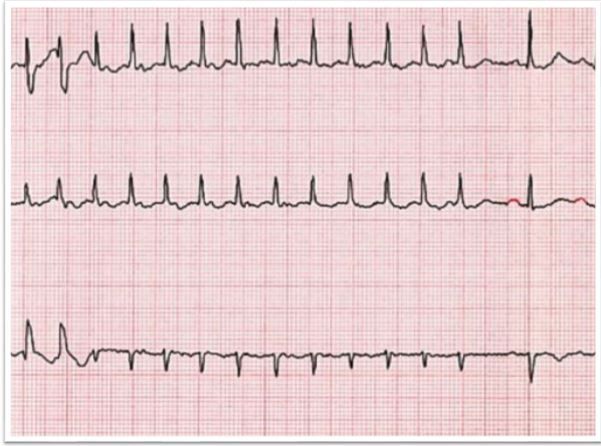- Clinical Technology
- Adult Immunization
- Hepatology
- Pediatric Immunization
- Screening
- Psychiatry
- Allergy
- Women's Health
- Cardiology
- Pediatrics
- Dermatology
- Endocrinology
- Pain Management
- Gastroenterology
- Infectious Disease
- Obesity Medicine
- Rheumatology
- Nephrology
- Neurology
- Pulmonology
Ablation Complications: Proceed with Caution
Right atrial ablation for atrial flutter is associated with a surprisingly high rate of serious, sometimes fatal, complications. News from ESC 2018.
©Katsiuba/Shutterstock.com

With the recent publication of the CABANA trial results, there has been a lot of enthusiasm for offering ablation as a first-line therapy for atrial fibrillation (AF). However, as our knowledge of (and expertise with) ablation evolve, we are appreciating that even procedures once perceived as relatively safe (based on analyses from retrospective studies and clinical trial data) carry significant complication rates when analyzed in a “real world” setting.
This was the conclusion of a recent German analysis, presented at the European Society of Cardiology Scientific Congress 2018 and published in the European Heart Journal.
The analysis used ICD-10, DRG, and OPS codes to study 33 353 German cases of catheter ablation for AF and atrial flutter in 2014. The results came as a shock to many: the rate of overall complications from left atrial ablation (ie, pulmonary vein isolation/AF ablation) was 11.7% to 13.5% with a major complication rate of 3.8% to 7.2%. Complication rates were related to location of ablation and type of energy used. Individual complications were as follows: an average of 7.1% for access site complications defined as bleeding, hematoma, shock, infection, and vascular complications. Pericardial effusion occurred in 3.5%, pneumonia in 0.8%, stroke in 0.6%, and AV block III° in 0.3%. Note that most of the complications were nonmajor complications.
The results came as a shock to many: the rate of overall complications from left atrial ablation (ie, pulmonary vein isolation/AF ablation) was 11.7% to 13.5% with a major complication rate of 3.8% to 7.2%.
Not surprisingly, overall rates of complication with atrial flutter ablations (which are usually right-sided) were lower than those seen with left atrial ablations, at 10.5%. However, it was surprising that major complications were more frequent with right atrial flutter ablations (7.4%), with an in-hospital death rate nearly 4 times as common vs left atrial ablations. There appeared to be an inflection point with respect to complication rates based on the experience of the performing center, with a 1.3 times higher rate in lower volume centers (≤100 left atrial ablations annually) and most of the differences being related to less serious complications, such as vascular access.
The analysis has multiple strengths, which include its large sample size and its “true world” representation. Limitations include German-only sites and patients and so results may not reflect practice patterns elsewhere. Furthermore, DRG codes are subject to ascertainment bias and may be overly sensitive in detecting complications. A probable explanation for why those patients who underwent right sided atrial flutter ablation had a higher rate of complications was the high prevalence of comorbidities (eg, COPD, CKD, CAD, DM, HF) and not necessarily procedural factors.
The study offers important insights to the evolving understanding of catheter-based therapies for atrial arrhythmias. And, although we certainly shouldn’t throw the baby out with the bathwater when it comes to ablation-it is a valuable treatment for selected patients-we also need to respect that it is not a therapy free of risk.
Reference: Steinbeck G, Sinner MF, Lutz M, et al. Incidence of complications related to catheter ablation of atrial fibrillation and atrial flutter: a nationwide in-hospital analysis of administrative data for Germany in 2014. Eur Heart J. cvy169.
